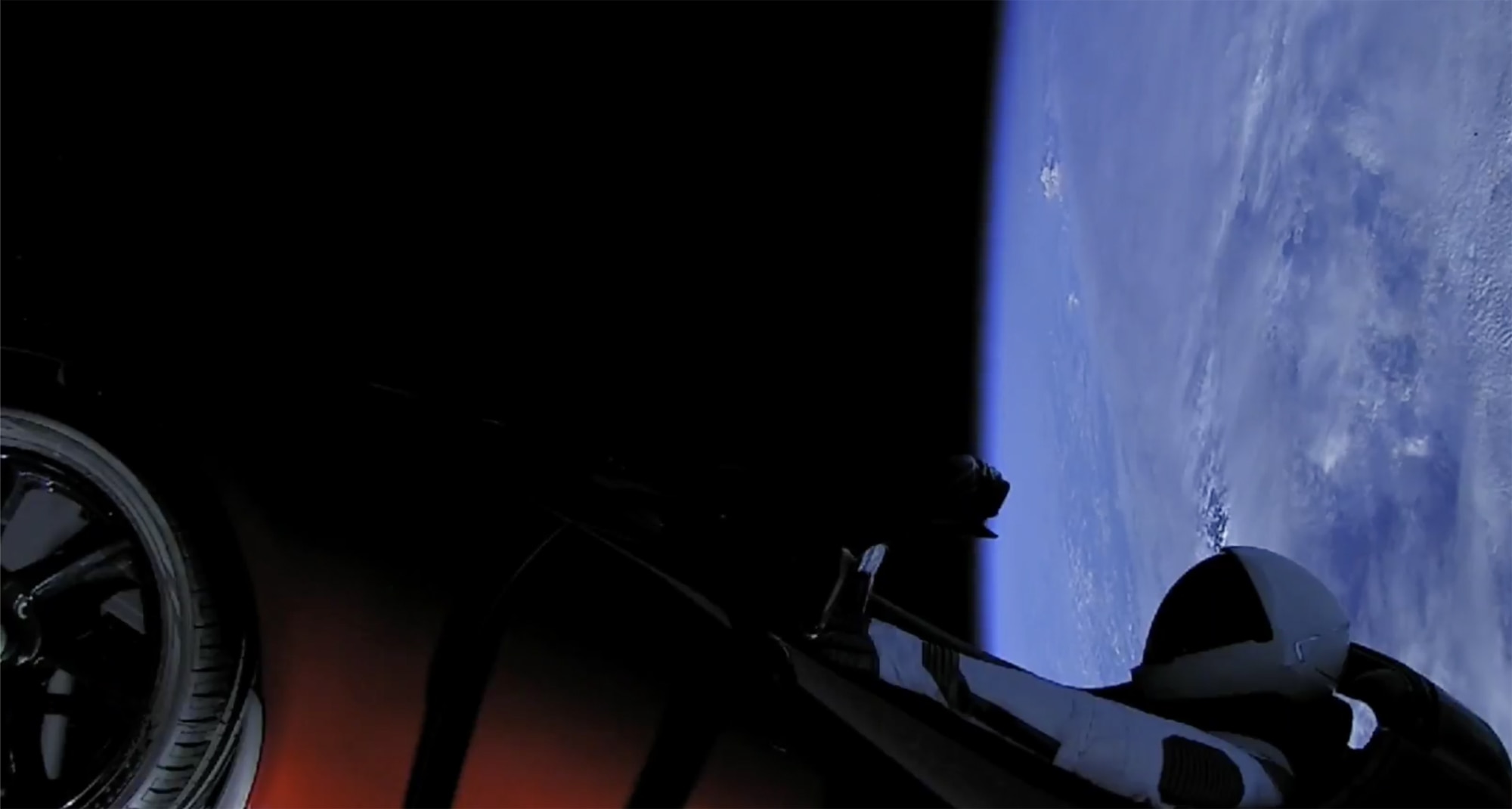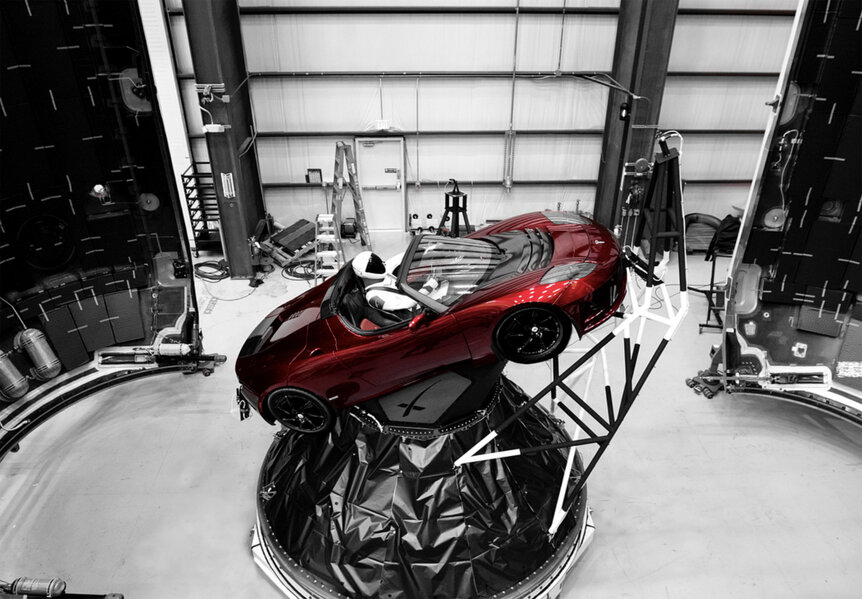Create a free profile to get unlimited access to exclusive videos, sweepstakes, and more!
Elon Musk’s space-voyaging Tesla: Where’s it headed?

One of the most difficult problems in space travel is also one of the most ironically simple: When you shoot something into space, where will it go?
The reason it's simple is because we understand gravity. Once you give a spacecraft its big push and it goes screaming off into the void, it should in principle be possible to know where it'll be at any point in the future.
The reason it's hard is twofold. One is that there are other things in space, like, say, planets. They have gravity, and exert a pull on the spacecraft. The math to calculate the combined effect from everything is hard, and actually impossible to write down analytically (that is, state an equation that will forevermore predict the motion of the spacecraft; this is called the n-body problem). The math has to be solved numerically; that is, by crunching lots of numbers.
The second problem is part of the first. Any slight uncertainty you have in the position or velocity of your spacecraft makes it harder to know where it is in the future. The farther ahead in time you try to predict it, the fuzzier your knowledge of where it is gets.
This difficulty leads to some interesting outcomes. For example: On February 6, 2018, SpaceX launched a Falcon Heavy rocket into space. The payload was Elon Musk's personal red Tesla Roadster, used essentially as a dummy mass to test the ability of the rocket to do its job. The rocket was so powerful it was able to fling the car (and its occupant, a spacesuit-bedecked mannequin named "Starman") into an egg-shaped trajectory that takes it out about as far as Mars, then swings back toward Earth.
Over time, as it orbits the Sun, the Roadster will get near both Mars and Earth. Their gravity will shift the shape of the car's orbit. But how much it changes depends on knowing the car's exact position and speed… which we literally cannot know. So what do we do?
Ross Cunniff is an engineer, and decided to figure it out. He employed a tried-and-true scientific method called the "Monte Carlo effect": Run a simulation of the orbit, but do it a thousand times, and each time change the initial position and velocity of the Roadster a little bit (for the nerds: He created a normal distribution of positions centered on the average with a standard deviation of 5 kilometers, and the same for the velocity with a standard deviation of 1.8 meters per second). Those little changes (called "perturbations") have little effect at first, but can have a huge impact with time. This helps you see what they might be.
Cunniff employed software called REBOUND, which uses the physics of gravity to calculate the motion of a spacecraft, and created a video to show what happens. In a sense, it's like he started with 1,000 Roadsters, each with a slightly different position and velocity, and then let them fly into space to see how it plays out. At first there's so little difference they all appear as one dot moving on the same path. But if you look carefully, at about a minute into the video you'll see that dot start to spread out. After that, the dots start to diverge wildly, and things get a little wild. Watch!
That's amazing. Just those very slight differences in the initial position and velocity propagate into the future, expand, and become chaotic. Most of the Roadsters stay on an Earth-Mars orbit, but some drop down toward the Sun, and others are completely flung out of the solar system! It all depends on how exactly they start their flight, and there's literally no way to know that.
So we don't really know where the Roadster will be in a couple of hundred years. Statistically speaking it might still be on its highway to the Red Planet. But there's a chance it'll be on its way to interstellar space. Or it might be vaporized: Cunniff notes that a paper has been published saying it has a decent chance of impacting Earth, Venus, or even the Sun over the next 15 million years*.
This may all seem like a bit of cheeky fun, but it has a very important lesson. There are a lot of rocks orbiting the Sun on similar trajectories as the Tesla. These asteroids may be smallish, like a hundred meters across or so, making them incredibly difficult to detect. And even when we do, our observations of them are simply not accurate enough to know precisely where they are and how fast they're moving. So they're subject to the same problem: We can only determine what their future is statistically.
That's why, when a new near-Earth asteroid is discovered, we can only give a probability of it impacting our planet. You can run simulations like this and show that, for example, out of a million computer runs, 200 of them showing it hitting us, so you say the chance of impact is 200 out of 1,000,000, or 1 in 50,000. As more observations are made, measurements improve, and new odds can be calculated. In general that narrows the future possible path of the asteroid so much that Earth is away from it, and a miss is certain. That's why usually when these things are reported the chance of impact drops with time.
But it shows just why we need more and bigger and better telescopes scanning the heavens. I'm not too worried about Elon's car crashing down out of the sky… but sometimes nature proves a bigger threat than even human-made ones. It's worth keeping an eye on the sky to make sure our math gets better.
*I lied earlier; there are actually three problems with predicting an object's trajectory. The third is that gravity isn't the only force acting on it. Solar wind, light pressure, the YORP effect… these all take their toll, especially on small objects over long periods of time. Cunniff's calculations don't incorporate these since the software he used doesn't include them; the journal paper, however, does.















